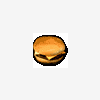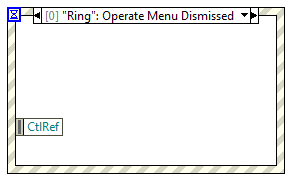-
Posts
628 -
Joined
-
Last visited
-
Days Won
69
Content Type
Profiles
Forums
Downloads
Gallery
Everything posted by Darren
-

Front panel control batch replacement problem!
Darren replied to kaly2002's topic in LabVIEW General
You can also use Quick Drop Replace to replace multiple items at once. Select all the controls you want to replace > Ctrl-Space > Type name of new item > Ctrl-P to replace them all. -
I had no idea this existed. I will look into it.
-
Correct. Scripting does not support setting dotted properties.
-
+1 for installing shared dependencies in vi.lib with VIPM packages. Makes this sort of thing much easier to manage than having each project have their own copy of the reuse code.
-
From what I can tell, the Item Close(?) and Item Open(?) events are not private. Maybe they were in a previous LabVIEW release?
-

Hidden terminals on the .NET Constructor Node?
Darren replied to LogMAN's topic in Calling External Code
Ah, there's the piece I was missing. Thanks for those details. I have filed CAR 711518 on this issue. I agree that it is a significant usability concern that it is so easy to wire to that null reference terminal, have code that doesn't function correctly, and not have an indication as to why.- 12 replies
-
- 1
-

-
- constructor
- .net
-
(and 1 more)
Tagged with:
-

Hidden terminals on the .NET Constructor Node?
Darren replied to LogMAN's topic in Calling External Code
I'm not sure how you got into this state, I don't see the hidden terminals in scripting. And if you delete those wires, there's no way to get back to the hidden terminals. Also, I got a DWarn when I copied your snippet into my diagram. So I'd chalk this up to some weird corner case/corruption and move on.- 12 replies
-
- constructor
- .net
-
(and 1 more)
Tagged with:
-
There's also a recording of this presentation available here: http://bit.ly/brainlesslabview
-
-
Can you attach a simple write VI and read VI that demonstrate the issue?
-
It's impossible to change the label text of a subVI. That's why this works.
-
Yeah, I think the explanation given to me was that the contents of the .vim file on disk are no different than the contents of a .vi file on disk. So since it's technically not a different file type, they thought it didn't warrant a new enum entry. Kinda like how there's not a "Template VI" entry in the list since .vi and .vit are the same type on disk. I may be misremembering though so don't take this as the official answer.
-
-
You can also press Ctrl-Shift-E from an open VI to select that VI in the project explorer.
-
All of the functionality provided by the Icon Editor UI is also available programmatically with the LabVIEW Icon API, available here: [LabVIEW 20xx]vi.lib/LabVIEW Icon API This API, along with many others, is described in my Hidden Gems in vi.lib presentation.
-

Programmatic Top-level in .llb
Darren replied to ensegre's topic in Application Builder, Installers and code distribution
There's more where that came from. -
How come the diagram on the speaker has a backwards wire, an unnecessary coercion dot, and an obsolete analysis VI call?
-
It's not a G-based dialog, so to my knowledge, there's no way to launch it programmatically.
-
I wrote this nugget a long time ago, but the tips are still applicable: https://forums.ni.com/t5/LabVIEW/Darren-s-Weekly-Nugget-10-30-2006/m-p/434181
- 4 replies
-
- 1
-

-
- performance
- labview
-
(and 1 more)
Tagged with:
-
rolf's explanation is the best discussion of the string range rationale I've seen: https://forums.ni.com/t5/LabVIEW/Darren-s-Weekly-Nugget-03-09-2009/m-p/867644#M392955
-
Another option is creating a lv_new_vi.vi in that same folder. This VI will override the behavior of pressing Ctrl-N. You can find the required conpane for the VI on labview wiki somewhere, but I think it's just 4x2x2x4 with an I32 in the upper right. Unfortunately (due to its age as a feature) it has no knowledge of application instances, and thus doesn't work properly when pressing Ctrl-N under different containers in the project window.
-
This is a C-based dialog, it does not have a G implementation that you can modify.
-
I don't know of a way to accomplish this. As discussed above, changing a VI with scripting requires the Transaction methods to preserve Undo history. To my knowledge you can't modify a VI with scripting, have that modification not show up in the Undo history, but preserve the previous Undo history.
-

How do you organize your custom error code files?
Darren replied to A Scottish moose's topic in LabVIEW General
I recently dealt with this issue when designing the LabVIEW Cloud Toolkit for AWS. I had to create a lot of new error codes, that mostly correspond 1-to-1 with the errors that AWS can return. My ultimate solution was that I had an Excel spreadsheet per class (Core, S3, SNS, SQS, IoT), and a build tool that parsed these Excel files and created a separate error text file for each class.- 11 replies
-
- errors
- custom error codes
-
(and 1 more)
Tagged with:




